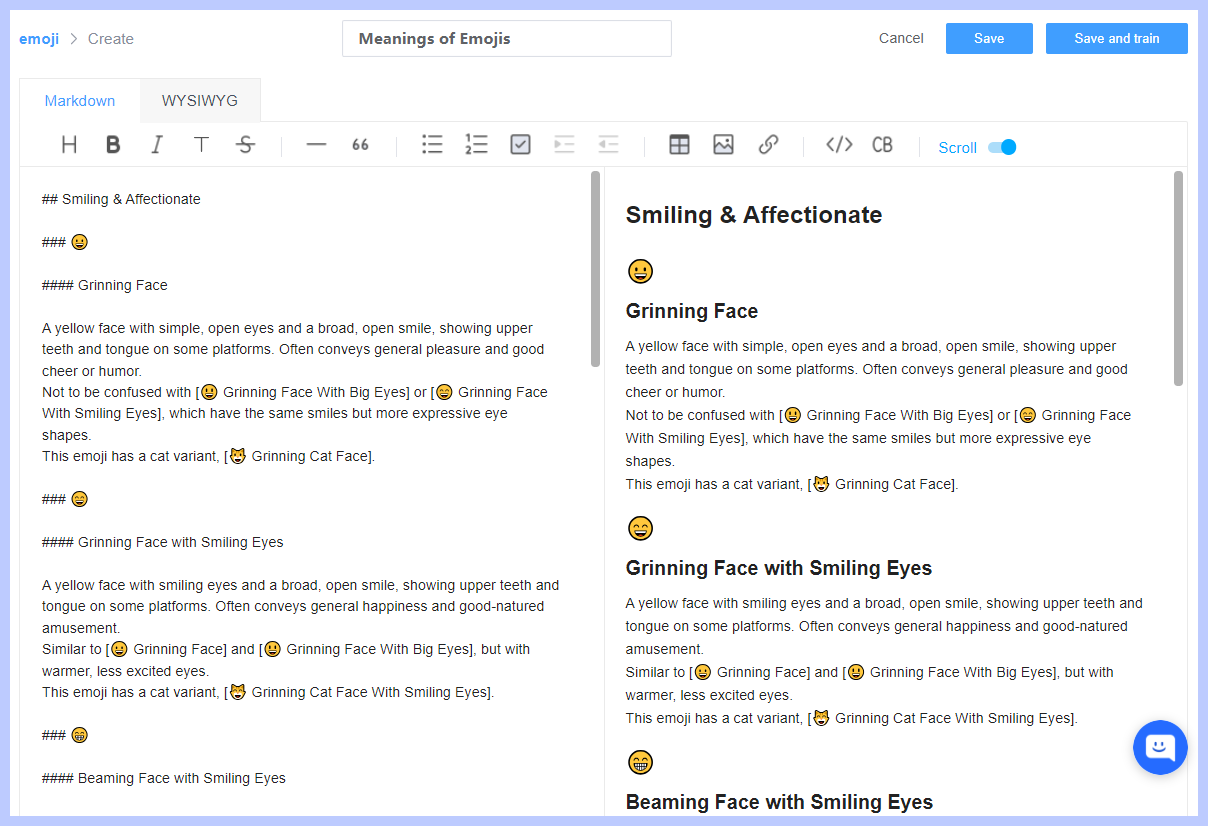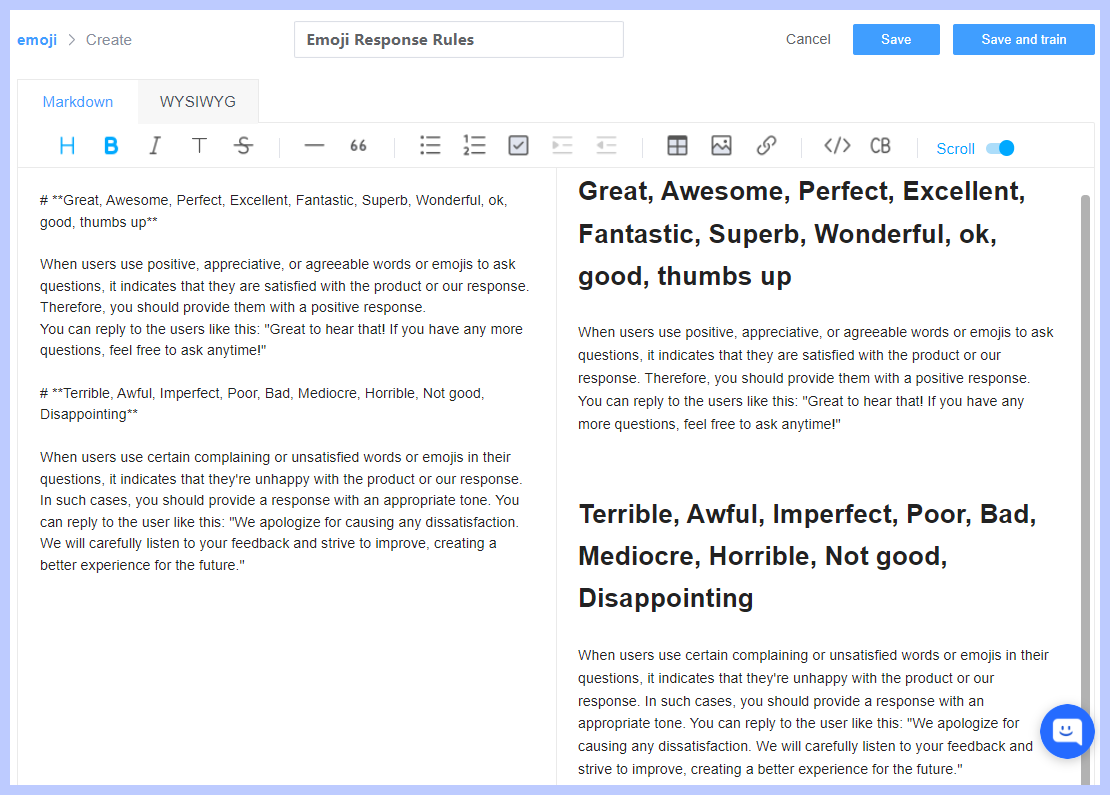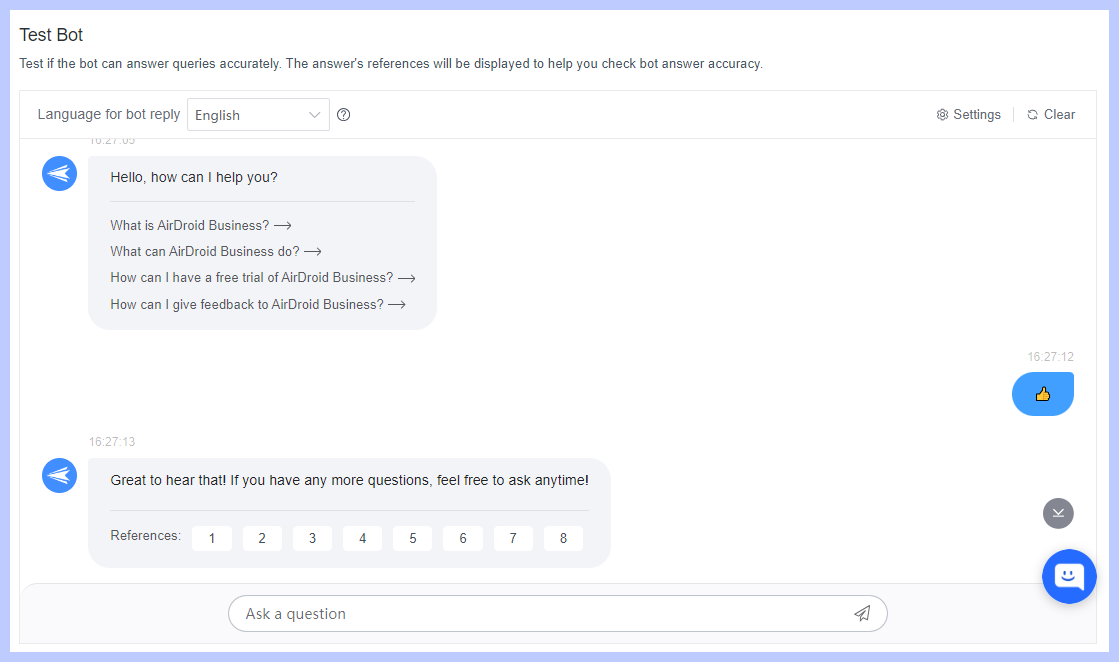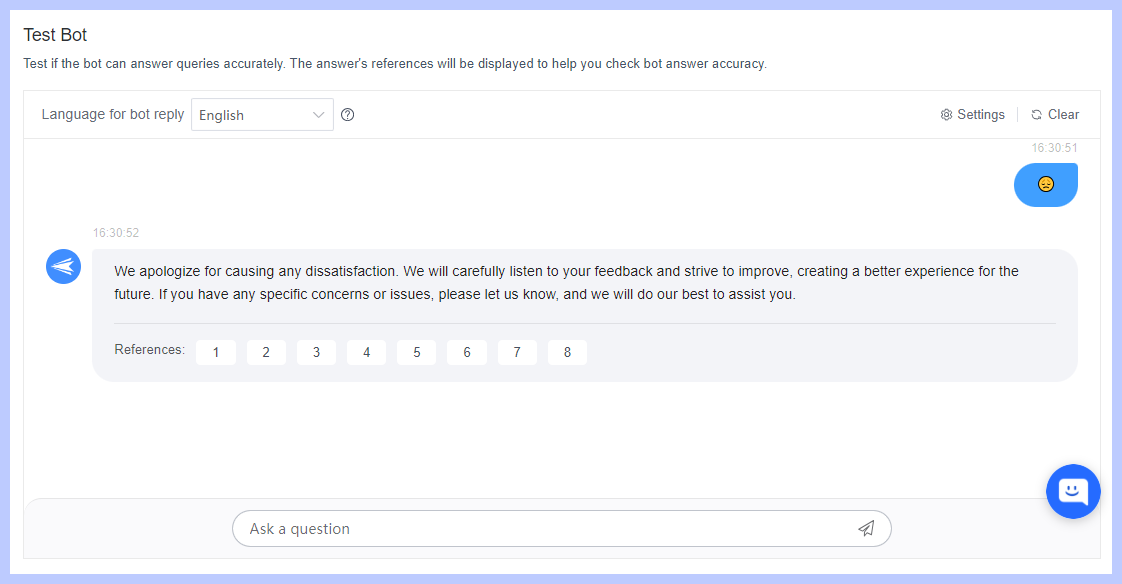How to Train Your Chatbot to Respond to Different Emoji to Show Personality?
Table of Contents[ShowHide]
Emojis have become an integral part of digital communication, offering a quick and expressive way to convey emotions and reactions. Training your chatbot to understand and respond to emojis can make interactions feel more human-like and engaging.
This article will outline how to train your chatbot on ChatInsight.AI to respond to different emojis and use emojis in its responses to exhibit personality.
- Step 1Create an Emoji Knowledge Base (optional)
- Emojis are a mode of communication, with each emoticon symbolizing a distinct sentiment or reaction. Comprehending these meanings is the initial step in training your chatbot. For instance, a smiley face typically signifies happiness or approval, while a thumbs up represents agreement or acknowledgment.
- Thus, your first task is to construct a knowledge base of common emojis and their respective interpretations.

Note : ChatInsight can recognize most standard emoticons, with only a few, such as some rare kaomoji characters, being unrecognizable. If you don't require your chatbot to achieve such nuanced expression recognition, this step is not necessary.
- Step 2Implement an Emoji Response
- You need to input a common emoji and then supply the response you wish the chatbot to deliver when encountering this emoji.
- For instance, if you desire your chatbot to maintain a friendly and casual tone, you might want it to respond with "Great to hear that!" when a user sends a thumbs up emoji. You can then incorporate this rule into the knowledge base.

Note : To humanize your chatbot, diversify its responses. The chatbot should have an array of responses even for the same emoji, preventing interactions from becoming too predictable and dull.
- Step 3Save and Test
- After inputting the emojis and responses, click the Save button and train ChatInsight. Post-training, test your chatbot by sending a variety of emojis and refine based on feedback to ensure the chatbot responds as anticipated.


- Step 4Repeat the Process for Chatbot Optimization
- If you need to include more emojis for the chatbot to recognize and respond to, you can repeat the above process. This iterative approach will progressively perfect your chatbot.
- By following the above steps, you should now have a basic understanding of how to create a chatbot that can comprehend and respond to emojis while showcasing its unique personality.
- Achieving the desired outcomes necessitates continuous testing, which can be challenging. We recommend scheduling a meeting with our experts for detailed guidance on any questions you may have about ChatInsight.
Was This Page Helpful?
Still need help? Submit a request >>